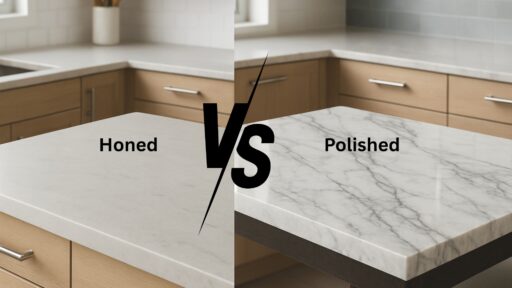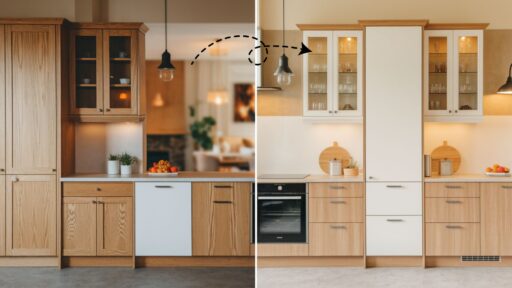Thinking about updating your floors but dreading the thought of ripping out those old tiles?
Installing flooring over tile might be the solution you’ve been looking for!
This time-saving approach lets you skip the dusty, noisy demolition process while still giving your space a fresh, new look.
Homeowners and busy families can save money, time, and cleanup by laying new flooring over existing tile.
But before you start picking out samples, there are important factors to consider.
Is your current tile in good condition? Which new flooring types work best?
How will it affect your door clearances?
The content covers everything you need to know about flooring over tile to help you make the right decision for your home.
Can You Install Flooring Over Tile?
Yes, you can install flooring over existing tile in many cases, saving you time, money, and the mess of tile removal.
This approach works best when you have a sound subfloor underneath your tile, with no cracks or movement.
The tiles should be firmly attached and not loose or damaged.
Your existing tile surface needs to be level without significant lips or dips.
However, installing over tile isn’t always the right choice.
If you have loose or cracked tiles, these problems should be fixed first.
Uneven surfaces with differences greater than 1/4 inch can lead to an unstable new floor.
Moisture issues are another red flag – if your tile area has water damage or ongoing moisture problems.
These must be addressed before adding new flooring.
Covering up these issues will only lead to bigger headaches later.
Pros and Cons of Flooring Over Tile
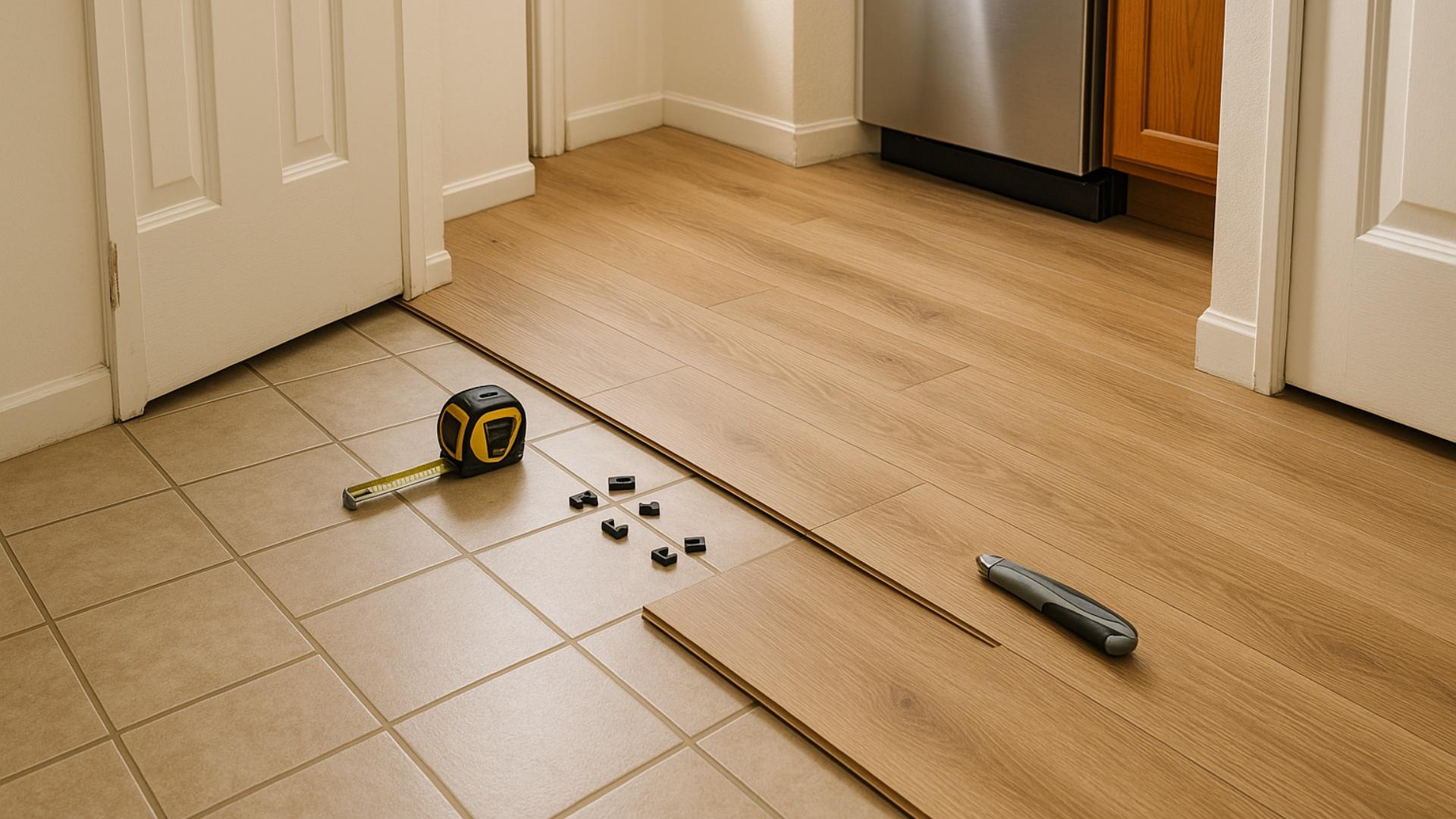
Before deciding to install new flooring over your existing tile, it’s important to weigh the advantages and disadvantages.
This approach offers several benefits but also comes with potential drawbacks that might affect your specific situation.
Consider these factors carefully to make the best choice for your home renovation project.
Pros
Installing flooring over tile saves significant time and labor costs compared to removal.
You’ll avoid paying someone to chip away old tile and haul it away, which can add hundreds or even thousands to your project budget.
Many homeowners complete their flooring project in half the time by skipping the demolition phase.
It allows you to enjoy your new floors sooner.
Cons
The increased floor height may require door trimming to ensure they swing freely without scraping the new surface.
You’ll also need to address transitions to other rooms where the height difference could create a tripping hazard.
Baseboards might need adjusting to accommodate the new height.
Built-in appliances like dishwashers could be harder to remove for service or replacement due to tighter clearances beneath countertops.
Best Flooring Options to Install Over Tile
Not all flooring types work equally well over existing tile.
Some options are better suited to this installation method than others.
Here are the top choices for covering your old tile.
Each with its own set of benefits and considerations to help you select the right option for your space and needs.
1. Luxury Vinyl Plank (LVP) or Tile (LVT)
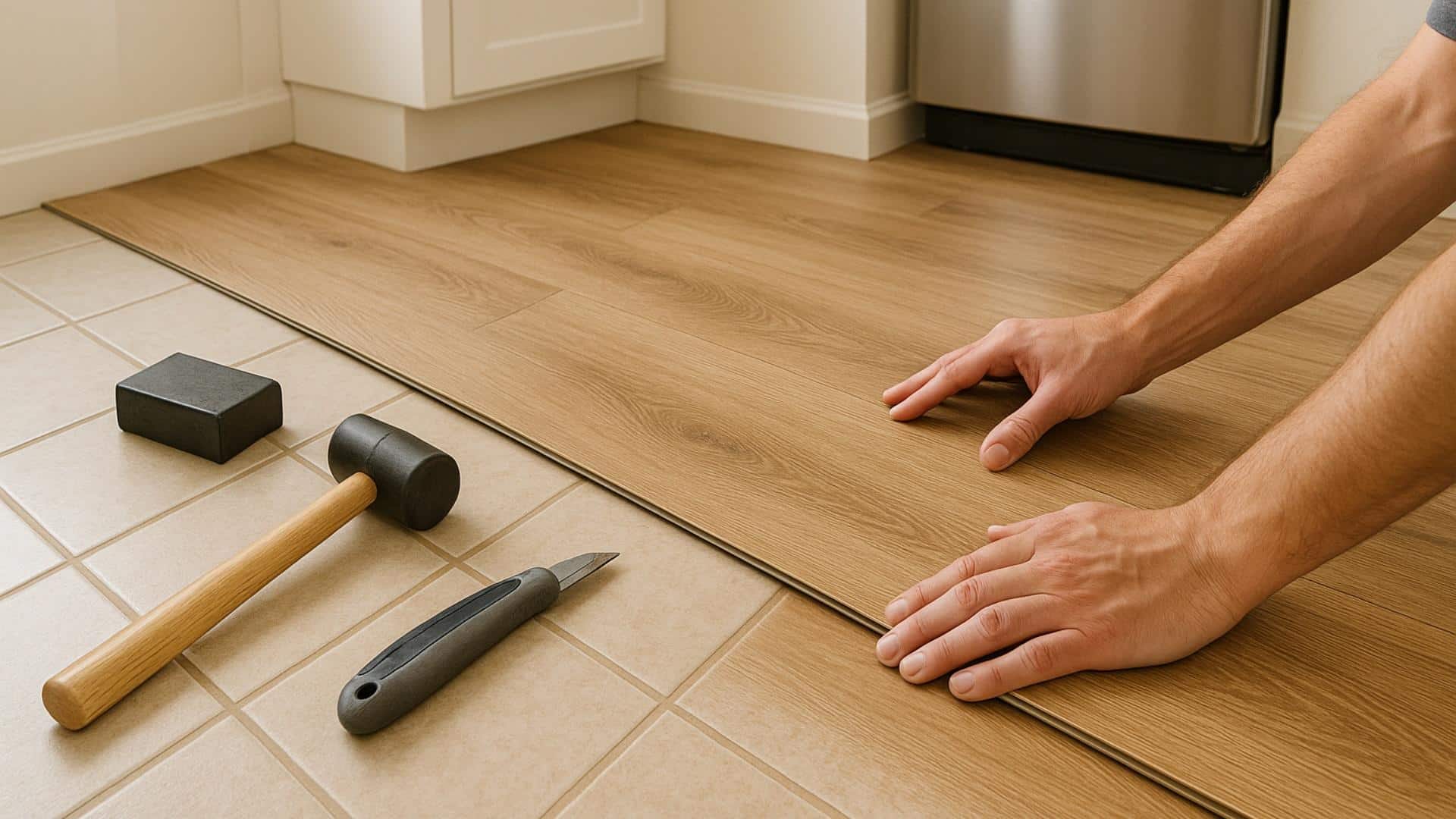
Luxury vinyl is one of the best choices for installing over tile due to its thin profile and flexibility.
These products come in click-lock or glue-down styles that can adapt to minor imperfections in your tile surface.
LVP and LVT are highly water-resistant, making them perfect for bathrooms and kitchens where moisture is common.
Most varieties install directly over tile with minimal prep, though filling deep grout lines is recommended for a smoother finish.
Typical Cost: $2 to $5 per square foot
2. Laminate Flooring
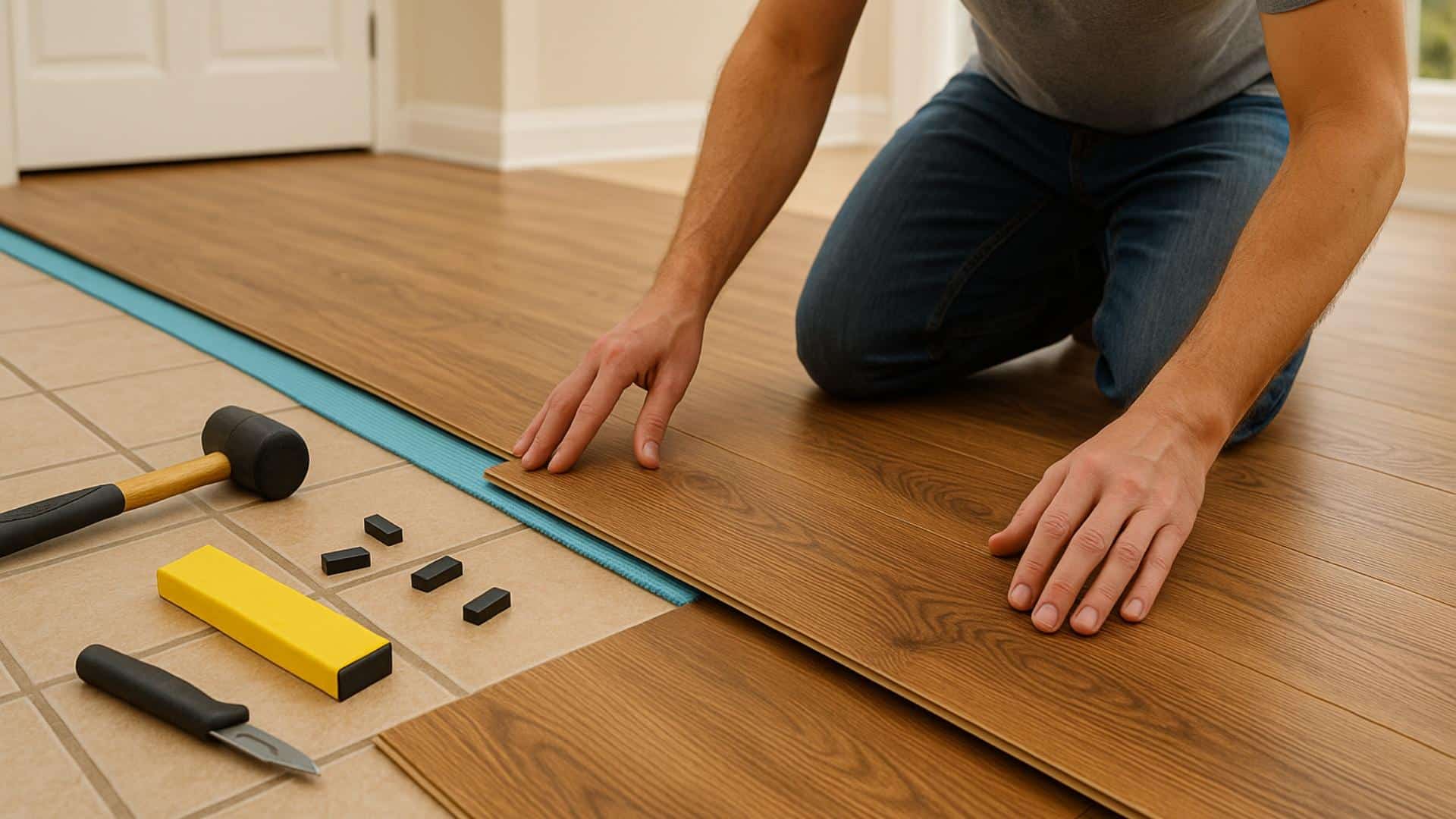
Laminate offers an affordable way to cover tile while providing good durability and a wide range of styles.
This option typically costs less than luxury vinyl or hardwood while still looking great.
You’ll need to use a quality underlayment to create a smooth base over the tile and help with sound absorption.
Be careful in areas with high moisture, as most laminate isn’t as water-resistant as vinyl.
Avoid installing laminate in full bathrooms or areas prone to spills.
Typical Cost: $1 to $4 per square foot
3. Engineered Hardwood

For a more premium look, engineered hardwood can work well over tile surfaces.
Engineered products, unlike solid hardwood, are more stable and less likely to warp when installed over existing flooring due to their layered construction.
You’ll need an extremely level tile surface for good results.
Any unevenness will be noticeable underfoot and may cause the wood planks to separate over time.
Most engineered hardwood uses a floating installation method that works well for this application.
Typical Cost: $4 to $8 per square foot
4. Carpet or Carpet Tiles
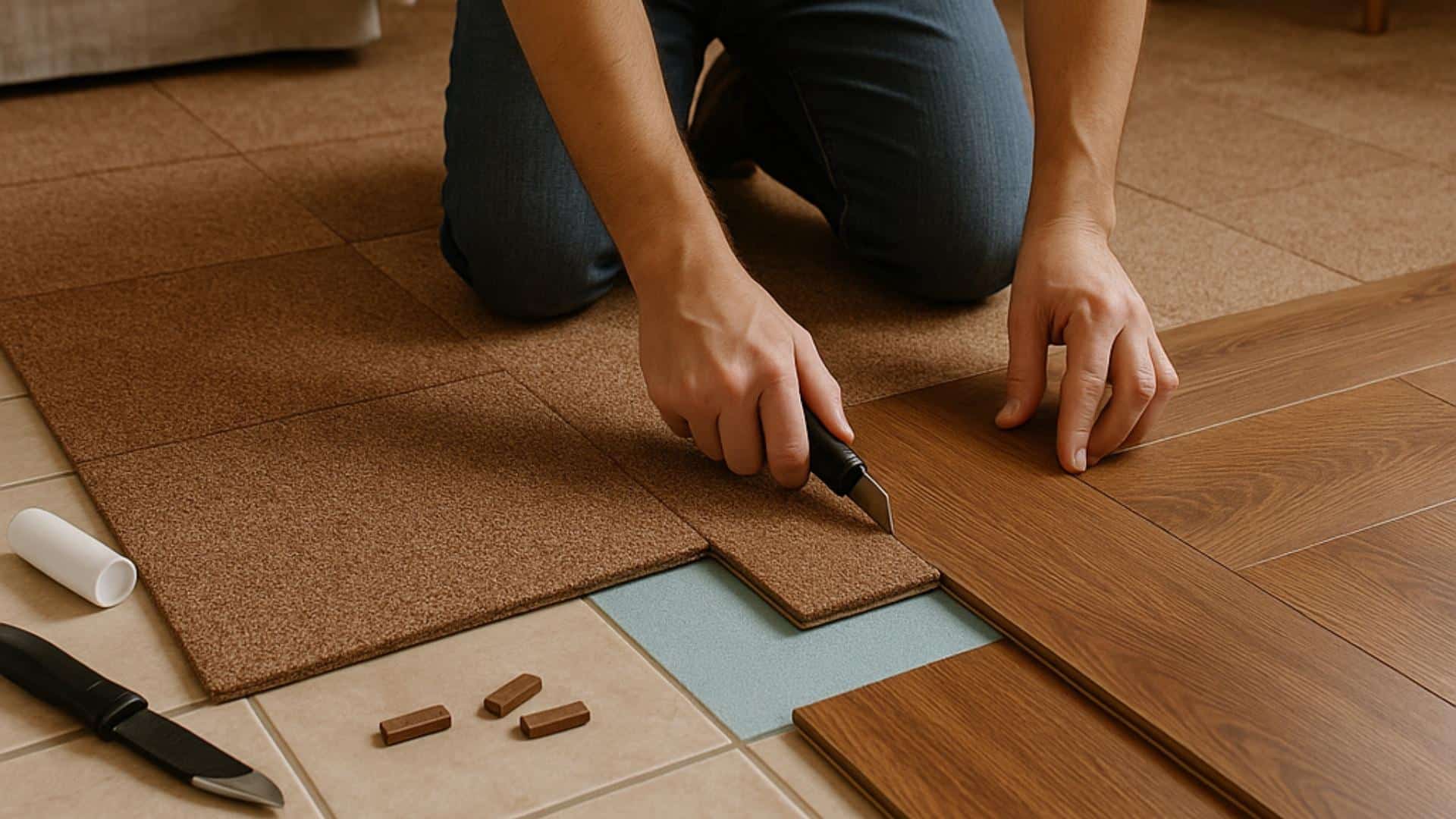
Carpet brings warmth and comfort when installed over cold tile floors in bedrooms or home offices.
The padding underneath helps smooth out minor tile imperfections and adds a layer of insulation.
Carpet tiles offer an easier DIY option compared to wall-to-wall carpet, allowing for the simple replacement of damaged sections.
Both options help reduce noise and can make a room feel cozier.
Just ensure the tile underneath is completely dry and free of any moisture issues before installation.
Typical Cost: $1 to $3 per square foot
Common Mistakes to Avoid!
When installing new flooring over tile, certain errors can lead to expensive problems down the road.
Being aware of these common pitfalls will help ensure your project succeeds and your new floors last for years to come.
- Ignoring moisture signs can lead to mold and flooring failure.
- Failing to measure door clearances results in doors that won’t close properly.
- Skipping thorough cleaning prevents proper adhesion of new materials.
- Not filling grout lines causes premature wear in those areas.
- Using flooring not rated for over-tile installation can void warranties.
- Rushing the acclimation process leads to buckling or gaps after installation.
Taking time to avoid these mistakes will save you money and frustration in the long run.
A little extra care during preparation and material selection makes all the difference in creating a beautiful, long-lasting floor.
DIY vs. Hiring a Professional
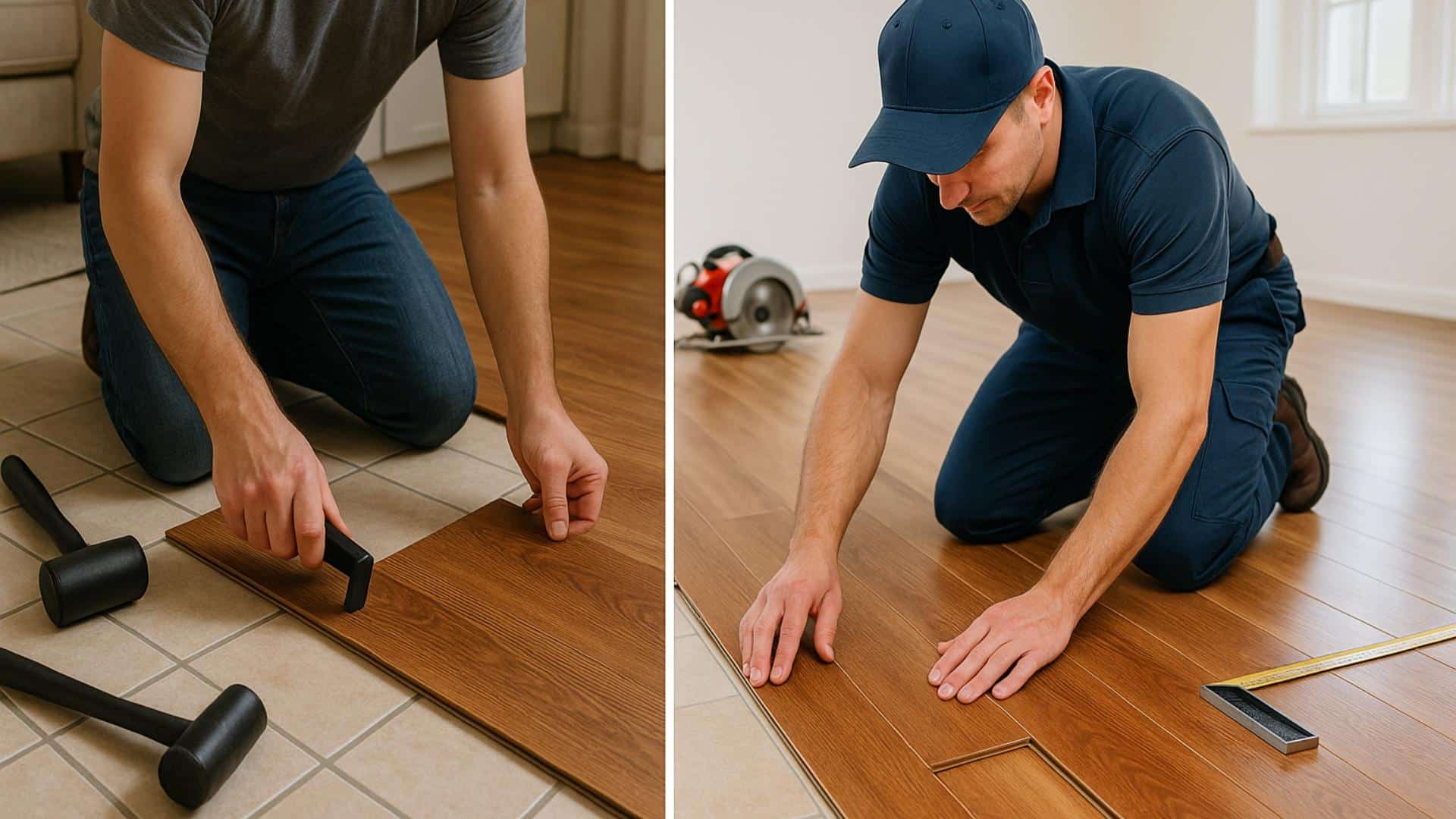
Installing flooring over tile can be a DIY project, but it’s not right for everyone.
Doing it yourself saves money on labor costs, which can be $2-5 per square foot.
You can work at your own pace and have complete control over the process.
However, DIY requires proper tools, basic skills, and time. Mistakes can be expensive to fix later.
Professional installers bring experience and the right equipment to the job.
They can spot potential problems you might miss and often complete the work faster.
Pros are especially valuable for large areas over 200 square feet or rooms with tricky layouts.
They’re also better equipped to handle special situations like uneven surfaces or moisture issues.
Most offer warranties on their work, providing peace of mind.
Consider hiring professionals if you have physical limitations, lack confidence in your skills, or don’t have the time to complete the project properly.
Maintenance Tips for New Flooring Over Tile
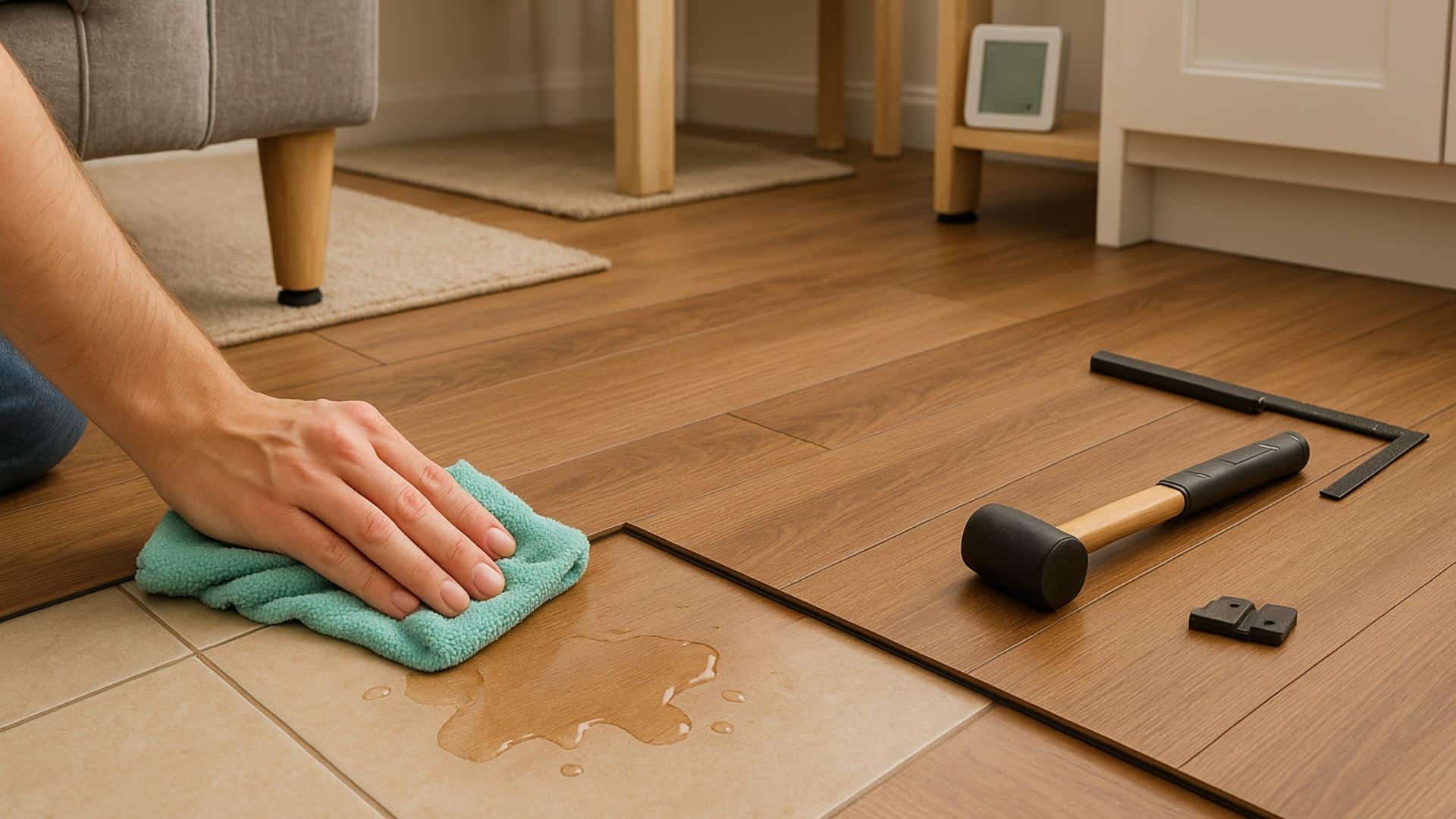
Proper maintenance ensures your new flooring lasts longer and continues to look great, especially when installed over tile.
Follow these simple care tips to protect your investment and prevent damage to both your new floor and the tile underneath.
- Clean spills immediately to prevent seepage between layers.
- Use only manufacturer-recommended cleaning products.
- Place felt pads under furniture to prevent scratches.
- Use area rugs in high-traffic zones to reduce wear.
- Maintain consistent indoor humidity (30-50%).
- Avoid dragging heavy objects that could cause separation.
Remember that your floor now consists of multiple layers, making proper care even more important.
Taking these simple steps will help maintain the beauty and integrity of your flooring system for many years to come.
Summing It Up
Installing flooring over tile offers a practical solution for homeowners.
It helps update spaces without the hassle of demolition.
Choose the right materials and prepare properly. Avoid common mistakes.
Enjoy beautiful new floors. These floors will look great and perform well for years to come.
Remember that successful flooring over tile depends on your existing surface condition.
Selecting compatible materials is crucial.
This approach isn’t perfect for every scenario. It provides significant advantages when conditions are right.
Before starting, weigh the pros and cons carefully.
Consult with flooring professionals if you’re unsure. You can now make an informed decision.
You can determine whether flooring over tile is right for your home renovation.
Are you unsure how to start your next home project? Let our interior design blogs guide you!





